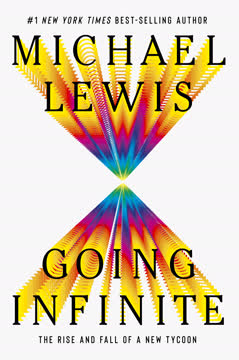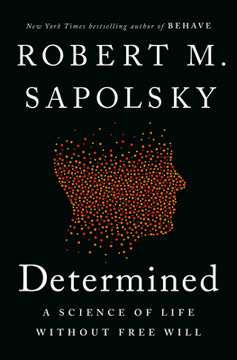Key Takeaways
1. GDP: A Wartime Invention Evolving Through History
GDP is one of the many inventions of World War II.
Origins in Conflict. Gross Domestic Product (GDP), the standard measure of a country's economic size, emerged as a critical tool during World War II. Its creation was spurred by the need to assess a nation's economic capacity for war production, marking it as a product of wartime necessity. Before GDP, various concepts of "national income" existed, but they lacked standardization and a comprehensive approach.
Evolution of Measurement. The concept of measuring national income has a long history, with interpretations changing based on intellectual climate and political needs. Early attempts focused on assessing resources for conflict and taxation, evolving to include trade and national debt considerations. Adam Smith introduced the distinction between "productive" and "unproductive" labor, influencing economic debate for over a century.
Modern Definition. The definitions we use now date back to two seismic events in modern history, the Great Depression of the 1930s and World War II (1939–1945). The modern concept of GDP emerged from the need to measure total economic output, including government spending, during times of war and economic crisis. This shift marked a significant departure from earlier notions of national income, which primarily focused on the private sector.
2. Early National Accounting: Measuring for Warfare and State Power
The word statistics has the same origin as state, and originally referred to the collection of figures concerning the state, specifically taxes.
Early Attempts. The earliest systematic attempts to measure the whole economy were prompted by warfare. In 1665, William Petty estimated England and Wales' income, expenditure, population, land, and other assets to assess the country's resources for conflict and finance it through taxes. This was a major advantage for England to have consolidated national income statistics, enabling calculations about the scope for increased output and tax revenues, when its larger and seemingly more powerful neighbor France lacked such information.
Double-Entry Bookkeeping. Petty introduced double-entry bookkeeping to keep records for the nation as a whole. This innovation allowed for a more comprehensive understanding of the flow of money and resources within the economy. Early estimates by figures like Charles Davenant in 1695, titled "An Essay upon the Ways and Means of Supplying the War," further emphasized the link between economic measurement and military objectives.
Strategic Advantage. Having consolidated national income statistics proved a major advantage for England, enabling calculations about the scope for increased output and tax revenues. France did not have similar strategically important economic and financial data until 1781. This allowed England to better leverage its resources and compete with larger neighbors.
3. From National Income to GDP: A Shift in Economic Thinking
For two centuries, “the economy” was the private sector.
Productive vs. Unproductive Labor. Adam Smith's distinction between "productive" and "unproductive" labor dominated economic debate until the late nineteenth century. Only those involved in making physical commodities counted toward national income, while services were considered a cost. This view influenced economic measurement and policy for many years.
Inclusion of Services. The new generation of “neoclassical” economists discarded the distinction between productive and unproductive activities. Alfred Marshall said firmly: “Wealth consists of material wealth and personal or non-material wealth.” Services were to be included in the definition of national income.
Government's Role. The decision to include government expenditure in GDP marked a turning point in the measurement of national income. It meant that GDP would be a concept strikingly different from the way the economy had been thought about from the dawn of modern industrial growth in the early eighteenth century until the early twentieth century. This change enabled a significant change in the part governments were to play in the economy.
4. GDP's Complicated Construction: Definitions and Practicalities
There is no such entity as GDP out there in the real world waiting to be measured by economists.
Three Approaches. GDP can be measured in three ways: adding up all the output of the economy, all the expenditure in the economy, or all the incomes. These three approaches are theoretically equivalent, but in practice, they involve different data sources and calculation methods. The expenditure approach, which sums consumer spending, investment, government spending, and net exports, is the most familiar.
Practical Challenges. Measuring GDP involves finicky attention to detail and complex adjustments. For example, calculating consumer spending requires accounting for transportation costs, trade margins, sales taxes, imports, inventory changes, exports, and sales to businesses and government. Similar complexities arise in measuring output and income.
Adjustments and Boundaries. GDP figures are adjusted for seasonal fluctuations to provide a clearer picture of economic trends. The "production boundary" defines what counts as economic output, leading to debates about including government expenditure, household services, and unpaid work. These decisions significantly impact the final GDP figure.
5. The Golden Age and the Rise of Macroeconomic Management
The conceptual measurement change enabled a significant change in the part governments were to play in the economy.
Postwar Boom. The postwar era saw strong GDP growth and low inflation, often referred to as the Golden Age. Governments seemed able to direct the economy with some finesse, continuing the planning they had begun during the war years. Unemployment was low, and living standards rose significantly.
Keynesian Influence. The development of GDP, and specifically its inclusion of government expenditure, winning out over Kuznets’s welfare-based approach made Keynesian macroeconomic theory the fundamental basis of how governments ran their economies in the postwar era. The conceptual measurement change enabled a significant change in the part governments were to play in the economy. GDP statistics and Keynesian macroeconomic policy were mutually reinforcing.
Macroeconomic Models. The development of econometric "models" of the economy enhanced the sense of control. These models, pioneered by Jan Tinbergen, represented relationships between economic variables and allowed policymakers to forecast the effects of their interventions. This approach, while influential, has faced criticism for its oversimplification of complex economic systems.
6. The 1970s Crisis: Stagflation and Challenges to GDP's Primacy
When sorrows come, they come not single spies, but in battalions.
Stagflation. The 1970s brought a crisis of capitalism, marked by stagflation—the combination of slow growth and high inflation. Conventional economic management tools seemed ineffective, and the oil price shocks of 1973 and 1975 exacerbated the situation. This period challenged the prevailing confidence in Keynesian economics and the ability of governments to manage GDP.
Cold War and Environmentalism. The intensity of the Cold War and the rise of the environmental movement further challenged the economic framework. The Limits to Growth report painted a gloomy picture of resource depletion, while concerns about pollution and sustainability grew. These factors questioned the focus on GDP growth at the expense of environmental and social well-being.
Human Development. The lack of progress in many developing economies led to a reevaluation of development goals. The Human Development Index (HDI), introduced by Mahbub Ul Haq, emphasized capabilities such as health, education, and access to technology, rather than solely focusing on income. This shift highlighted the limitations of GDP as a measure of overall welfare.
7. The New Economy: Technology and the Measurement of Services
You can see the computer age everywhere but the productivity statistics.
The Computer Revolution. The mid-1990s saw the rise of the "New Economy," driven by the computer and Internet revolution. However, the initial impact on productivity statistics was unclear, leading to Robert Solow's famous observation. It took time for businesses to reorganize and fully leverage the new technologies.
Measuring Services. The increasing share of services in advanced economies posed challenges for GDP measurement. Unlike physical products, services are often difficult to quantify and value. This issue, combined with the rapid pace of technological innovation, raised questions about the accuracy of GDP as a measure of economic progress.
Hedonic Pricing. To address the quality improvements in high-tech goods, statistical agencies adopted "hedonic pricing" techniques. This involved estimating the value of various characteristics of a product, such as memory size or screen resolution, to adjust for quality changes. This adjustment increased the estimated level of GDP and its growth, particularly in the United States.
8. The Great Crash: Finance, Welfare, and the Limits of GDP
The scars from the current crisis seem likely to be felt for a generation.
Financial Crisis. The 2008 financial crisis exposed the limits of GDP as a measure of economic well-being. The crisis raised questions about the contribution of the financial sector, the role of risk-taking, and the accuracy of GDP statistics. The crisis also prompted a reevaluation of economic growth and the prevailing economic theory.
Financial Sector Measurement. The way financial output is measured in GDP has been criticized for overstating the sector's contribution. The "financial intermediation services indirectly measured" (FISIM) approach counts increased risk-taking as increased real growth, which is misleading. Adjusting for banks' risk-taking would significantly reduce the measured output of the financial sector.
Production Boundary. The crisis has led to questions about the "production boundary"—what counts as economic output. Activities like unpaid housework and the informal economy are often excluded, while potentially harmful activities like arms sales and polluting industries are included. This raises fundamental questions about what we value in the economy.
9. Beyond GDP: Alternative Measures of Progress and Well-being
We must be highly skeptical of the view that long-term changes in the rate of growth of welfare can be gauged even roughly from changes in the rate of growth of output.
Happiness vs. GDP. The anti-GDP campaign has gained momentum, advocating for measuring "happiness" rather than economic growth. However, studies linking happiness to GDP have produced mixed results, and the concept of happiness is difficult to quantify and use for policy purposes. While GDP does not measure welfare directly, it contributes to it and is highly correlated with things that definitely do affect our well-being, such as life expectancy and infant mortality.
Human Development Index. The Human Development Index (HDI) is a widely used alternative that measures capabilities such as health, education, and access to technology. The HDI provides a broader picture of welfare than GDP alone, but it also has limitations and does not capture all aspects of well-being.
Dashboard Approach. A "dashboard" of indicators, as recommended by the Sen-Stiglitz-Fitoussi commission, involves collecting and publishing statistics on a range of indicators that contribute to social welfare. This approach allows for a more nuanced understanding of progress and avoids the pitfalls of relying on a single, aggregated measure.
10. The Future of Economic Measurement: Complexity, Intangibles, and Sustainability
GDP is a statistic designed for mass production.
Complexity and Variety. The increasing complexity of the economy, driven by innovation and globalization, poses challenges for GDP measurement. The proliferation of variety, customization, and global supply chains makes it difficult to capture the true value of economic activity. GDP underrecords growth by failing to capture fully the increase in the range of products in the economy.
Intangibles and Services. The growing share of services and "intangibles" in advanced economies further complicates measurement. It is difficult to separate quality and quantity or even think about quantities at all. The increasing prevalence of zero-priced goods and services online also challenges the traditional GDP framework.
Sustainability. The urgency of questions of sustainability requires more attention to be paid to the depletion of resources and assets, which is undermining potential future GDP growth. A regular, official indicator of sustainability is urgently needed, however. At present, governments have nothing to tell them whether the growth their policies are delivering is coming at the expense of growth and living standards in the future.
Last updated:
Review Summary
GDP: A Brief but Affectionate History receives mixed reviews. Many readers find it informative and accessible, praising its historical context and clear explanations of GDP's limitations. However, some criticize its lack of depth, repetitiveness, and perceived ideological bias. The book is commended for its concise overview of GDP's evolution and current debates, but some feel it fails to offer concrete solutions or adequately address certain aspects of economic measurement. Overall, readers appreciate the book's attempt to demystify GDP, even if they find its execution imperfect.
Similar Books







Download PDF
Download EPUB
.epub digital book format is ideal for reading ebooks on phones, tablets, and e-readers.






